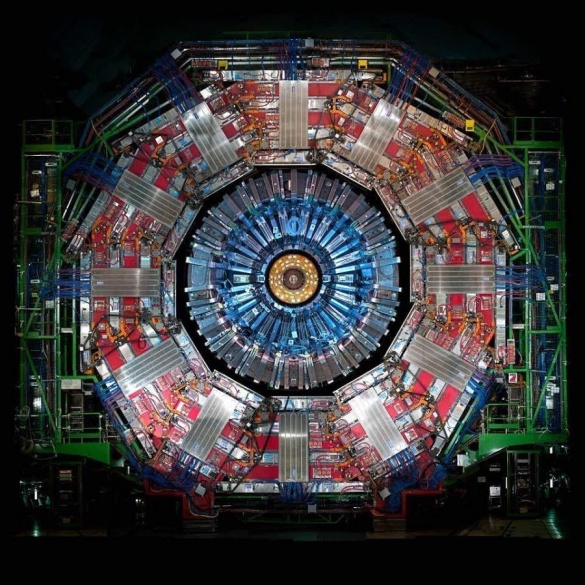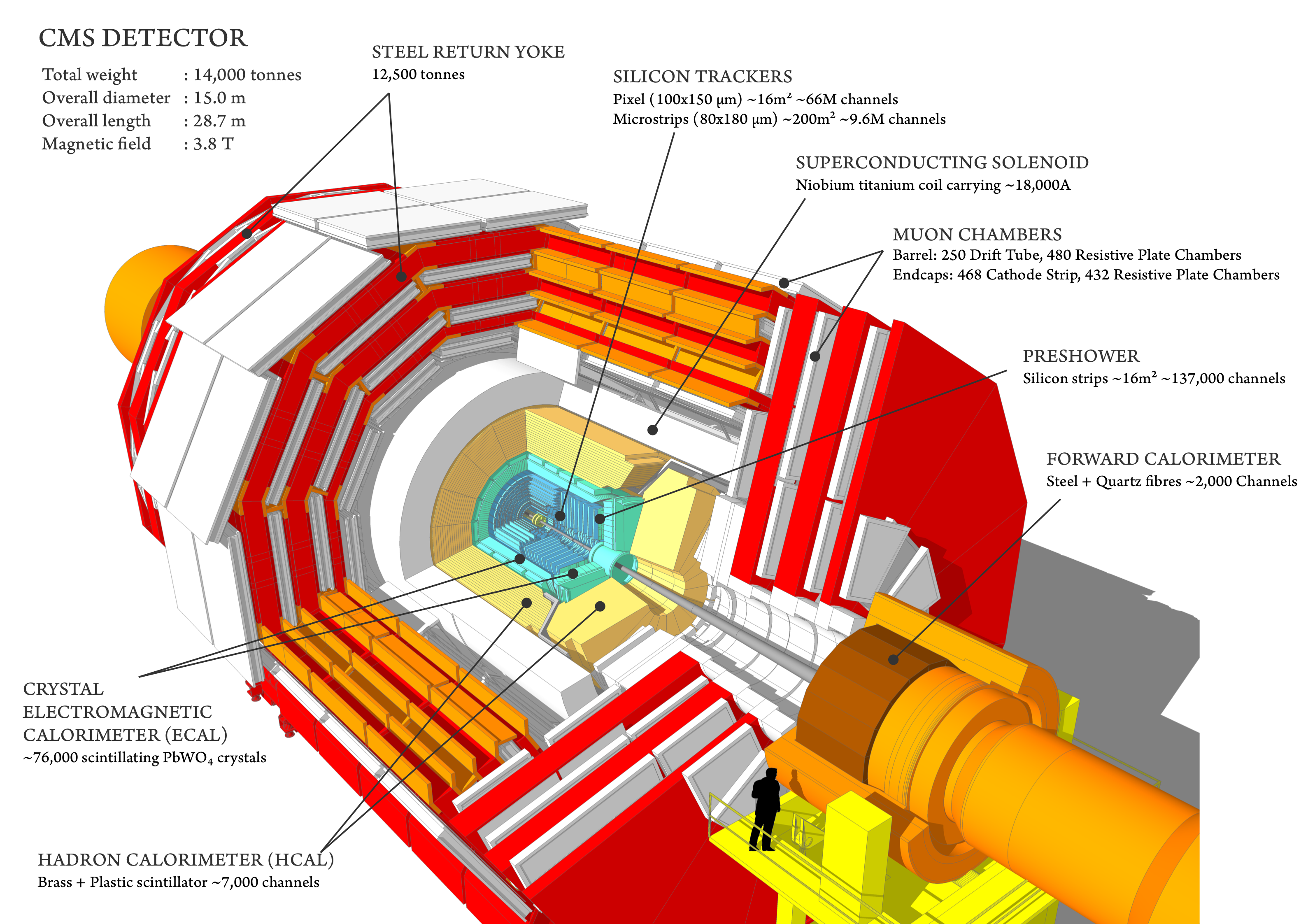
A cross-sectional view of the CMS experiment, Hoch, Michael; Brice, Maximilien; CMS collaboration
The CMS (Compact Muon Solenoid) collaboration is one of the four major high-energy physics experiments at the LHC and is comprised of more than 4’000 scientists and engineers representing over 200 institutes from more than 40 countries. The RTU group is a part of this collaboration. The CMS collaboration also includes physicists from our partner institutions from the CERN Baltic Group.
The CMS experiment is a general purpose detector (GPD) and is situated approximately 100 metres underground near the town of Cessy, France. CMS is a cylindrical detector with a radius and length of 15 and 21 metres, respectively. Impressively, despite taking up a volume nearly six times smaller than that of the other GPD at the LHC, ATLAS, it weighs twice as much, at 14’000 metric tonnes. This is due to the choice of material which is utilised to slow down the ultra-relativistic particles arising from the collision points at the hearts of these experiments. While for ATLAS this is predominantly air, CMS uses a much denser material, namely, iron. The CMS detector is hermetic, meaning that, with the exception of the beam-pipe itself, it completely envelops the collision point.
 |
| The structure of the CMS detector. A silhouette of a person can be seen in the foreground for scale. Source: CERN. |
From the collision point outwards, the detector is formed by onion-like layers of various sub-detectors, each strategically placed to perform specific duties. The innermost layer is the tracker, which is a combination of silicon pixel and micro-strip sensors. As a tracking detector, its main objective is to pinpoint the exact locations where charged particles have traversed it. These ‘points’ are then connected using detector software and the paths of the particles extrapolated to their points of origin, known as vertices. After the tracker comes the electromagnetic and hadronic calorimeters, the ECAL and HCAL. These two devices serve the same basic goal, to fully stop most particles arising from the collision point. By fully stopping these particles the entirety of their energy is deposited into the calorimeters. This energy information can be combined with the information from the trackers to determine the species of each particle. The difference in the calorimeters is in their sensory material, the ECAL is made of lead tungsten-oxide crystals and is mainly used to stop and identify electrons and photons. The HCAL is a layered detector of brass plates and scintillating plastic. The HCAL is used to stop and identify various hadrons, like pions, kaons and protons. Following the calorimeters is the superconducting solenoid. It is a niobium-titanium coil which provides the entire experiment with a 4 T magnetic field. This field serves the purpose of bending the paths of charged particles as they traverse it. The radius of the bent paths is proportional to the particle’s momentum, which can therefore be determined using the trackers. To produce this field the entire magnet is cooled down to 4.5 K and supplied with 18’000 A of current. The outermost layer of the detector consists of the muon chambers. Muons are interesting subatomic particles as they are what is known as a minimally-ionising particle. In simple terms, although they leave a slight trace in all the tracking detectors, they interact with the material far less than their lighter cousin, the electron. This means that high-momentum muons often traverse the entire detector. Thus, by placing these extra tracking detectors on the outside of the detector, where no other charged particle should be present, the experiment can identify muons with great accuracy. This is very important, as high-momentum muons are a common signal of various interesting physics processes.
As the designation of a GPD would suggest, the physics programme at CMS is extremely broad. The most famous physics goal of the CMS was the search for the elusive Higgs boson. After the discovery of the t quark in 1995 at Tevatron, the Higgs became the last missing piece of the Standard Model. This is, of course, until evidence of its existence was found at the LHC by the ATLAS and CMS collaborations, announced on the 4th of July 2012. This discovery was an absolute triumph of science and was rewarded with the award of the 2013 Nobel Prize in Physics to Peter Higgs and François Englert.
Despite this completion of the SM, the CMS physics programme does not cease, as we do know that the SM itself is an incomplete theory. In fact, the absence of any New Physics signals to date is in and of itself a curious mystery. To answer the many remaining questions regarding the nature of our Universe, hard work in both precision physics and exotic searches at the LHC continues. This includes the work of the RTU group, which is involved in Top quark physics research.